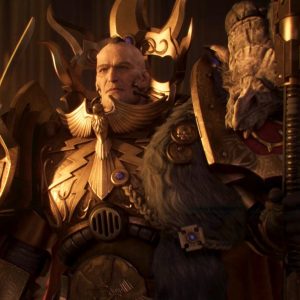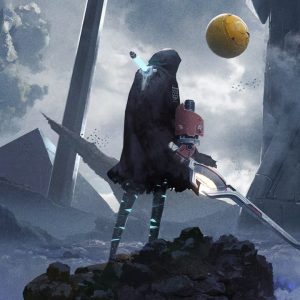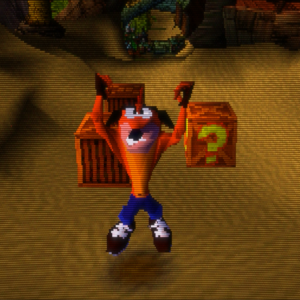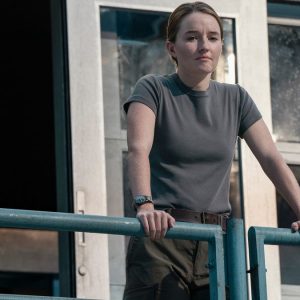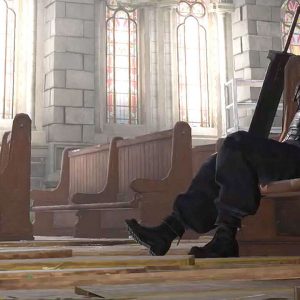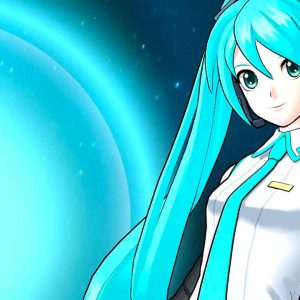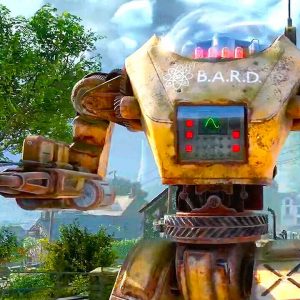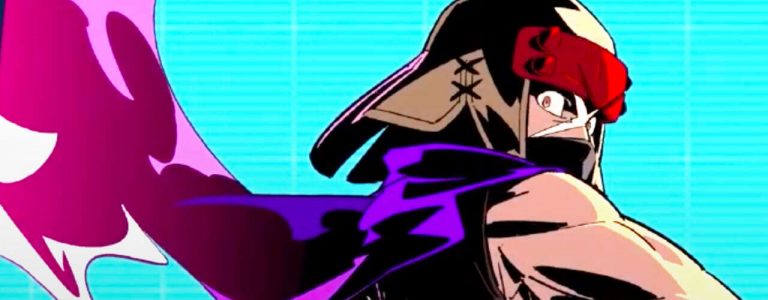The Flash is a lot of movie to absorb. It’s got time travel and a multiverse, multiple Batmen, multiple Flashes, and a Supergirl. It’s not a simple movie, in other words, and it’s certainly not one that’s easy to explain. So let’s dive in.
Warning: This article contains major spoilers for The Flash, including all the details of its ending.
The Flash has two main modes. There’s the fun and light-ish Back to the Future mode, which is most of its running time–the first 90 minutes or so. Barry, having accidentally discovered his ability to time travel when he took off running as fast as he could during an emotional moment, goes back in time and prevents his mother’s death. But this has ramifications–Barry has spawned a new universe where Michael Keaton is Batman and none of his other superfriends exist.
In this world, Barry meets his unpowered younger self and his old-but-still-living mom, and then even though Superman isn’t around, General Zod shows up looking for a missing Kryptonian just like he did in Man of Steel. Barry is pretty freaked out by this, since Zod is going to try to terraform the Earth and kill everyone on it. So our Barry makes sure that Young Barry gets his powers, and they go break into Wayne Manor to recruit this other Batman. And this other Bruce gives the Barrys a crash course in the laws of spacetime.
Essentially, when Barry changed his past, it not only changed everything that happened after that point–it caused the universe to correct the past as well. While the film doesn’t actually say why that would be, the concept is that the universe needs linear cause-and-effect, and thus has to rewrite its own backstory to make Barry’s interference with his past make sense internally.
But it doesn’t dwell on those mechanics for too long. Using Batman’s considerable intelligence-gathering utilities, the three of them learn the Kryptonian is in a Russian prison, and they try to break him out–but it turns out that it’s actually a she, Kara, aka Supergirl.
After a little bit of convincing, Kara agrees to fight Zod, and the four of them head to the CGI battlefield to take him on. But things go badly. Supergirl loses her fight with the other Kryptonians, giving Zod exactly what he came to Earth for, and Batman sacrifices himself in vain when the Batwing is damaged during the fight. And Zod is about to kill every human on Earth.
Old Barry, having trapped himself in the wrong reality by messing with time, isn’t eager to do so again to save this world. But Young Barry, who is just days into his gig as a superhero, decides immediately that he’s going to go on his own time-adventure to save his own family. We see a few iterations of this cycle, but it always ends the same way: Supergirl dies, and everyone who was born on Earth soon follows after her.
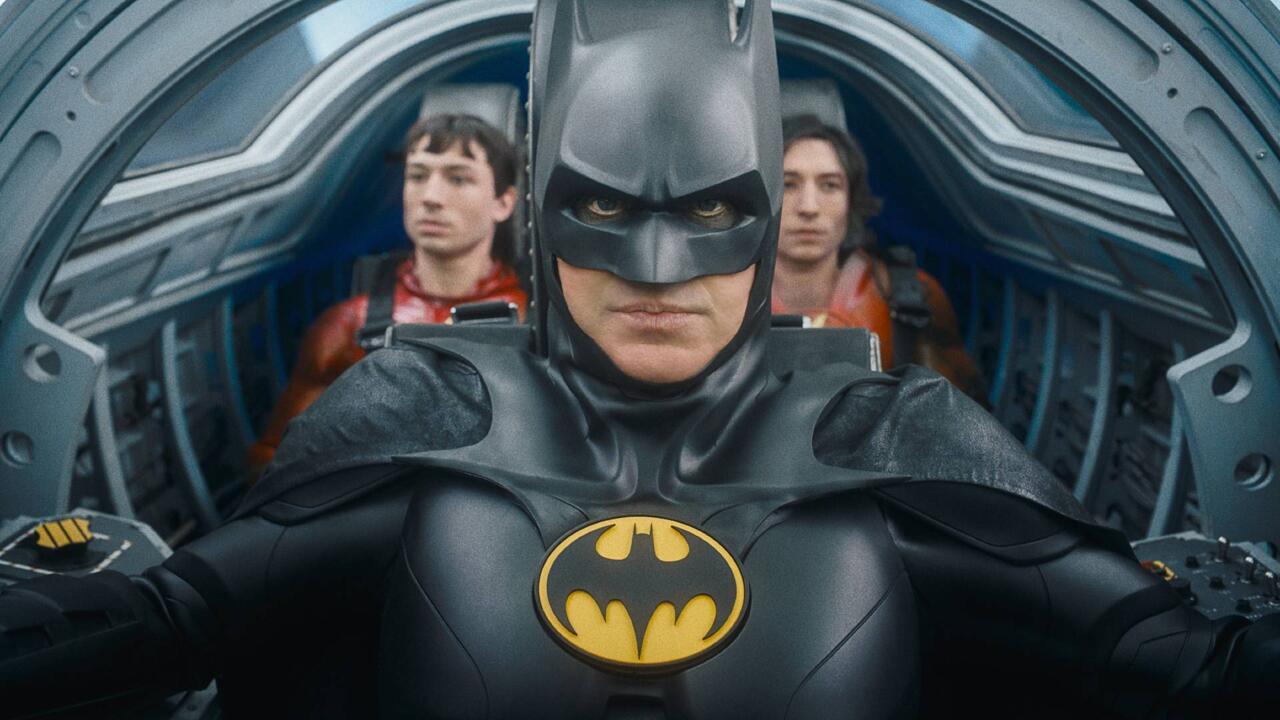
Old Barry sees what’s happening, and he follows Young Barry into their golden Speed Force orb that exists outside of time. Old Barry tries to get Young Barry to stop fighting that battle over and over again, because things are looking pretty bad in the multiverse. In the Speed Force, which is a completely CGI environment, we can see a bunch of floating orbs that represent all the different iterations of DC Comics characters that have appeared on screen over the past hundred years or so. Along with one that never actually happened: Nic Cage, as a long-haired Superman, fighting a giant spider–a reference to a story Kevin Smith has told about some of the studio notes he got when he was writing a Superman Lives movie script in the late 1990s.
All these CGI orbs are colliding and exploding–all of reality seems to be falling apart because Young Barry is committed to winning this unwinnable fight. And so this whole thing comes down to Barry against himself, and against his other self. At some point during this sequence, our Barry finally gets to talk to Young Barry. Though he’s actually quite old now, because he’s spent many lifetimes trying to save his world. This Forever Barry simply can’t stop at this point, and he’s become too powerful for the original Barry to stop. Fortunately, a different version of Young Barry paused his time quest in the Speed Force long enough to overhear the original Barry pleading with Ancient, Messed Up Barry to stop–and it’s this other Young Barry who puts a stop to it all by killing his future self and letting his world die. And, by extension, letting himself die.
This leaves our Barry alone in the Speed Force. And he decides he’s going to put things back the way they were. Which means he has to let his mom die. But he can’t let go of his dream so easily, and he makes himself talk to his mom in the grocery store before doing the thing that will lead to her death later. If he wanted to get back to his own home universe, that probably wasn’t the right way to go about it.
For his part, Barry thinks he’s managed to restore things back to the way they were. But he’s wrong. Back in his present day, his father–in prison for allegedly killing Barry’s mother–wins his appeal on evidence that didn’t exist before Barry went time traveling. Something’s off, but for a moment it seemed like a Back to the Future ending, where things are different but in a good way.
But then Barry tries to talk to Bruce Wayne, and it turns out he’s George Clooney here.
The Flash ending explained: Is George Clooney back as Batman?
It’s not very likely that Clooney is going to be the DC Movieverse’s new Batman, returning to the role he previously held for a single movie, 1997’s truly awful Batman & Robin. In turn, that means this ending wouldn’t be any kind or reset for DC at all. Instead it’s more like we just watched the pilot episode of DC’s version of the ’90s sci-fi show Sliders, with Barry hopping from dimension to dimension in hopes of getting back to where he came from.
In that sense, The Flash could lead to a refresh down the line. But here he’s just in a different universe–the old one is still there. And it would be immensely weird for the second Aquaman movie to not take place in the same universe as the first movie. Though maybe they have an in-universe (or in-multiverse?) explanation ready to go for that, courtesy of The Flash’s post-credits scene.
The Flash Post-Credits scene explained
There’s no mid-credits scene on The Flash, but it does have one more bonus scene at the end of the credits. And while it seems like this scene is mostly just there for a laugh, there may be a significant detail in here.
In the post-credits scene, Barry is hanging out with a very drunk Aquaman and recapping all the stuff that happened during the movie. And he specifically gets into how it’s strange that every Batman was different while Aquaman is exactly the same here as he was in Barry’s home universe. The scene trails off and doesn’t go anywhere after that, but that line was your best indication that DC Films lives in this new universe now–saying that this Aquaman is exactly the same as the one from Barry’s universe means that his story should be mostly intact and they won’t have to change anything for the sequel or do any irrelevant multiversal explanations for why something is different.
But, again, it would be odd for the DC movieverse to move into a universe where George Clooney is Batman if he’s not actually going to be playing Batman again for a whole movie–and there is no reason to think he is. But maybe it’s for the best if we don’t think about it too hard right now–with brand-new leadership in James Gunn and Peter Safran, it’s doubtful that DC Studios has anything set in stone just yet anyway.
For now, think of it this way: The Flash has opened a lot of doors, but it’s going to be up to a future DC movie to pick which one to walk through.
The products discussed here were independently chosen by our editors.
GameSpot may get a share of the revenue if you buy anything featured on our site.
